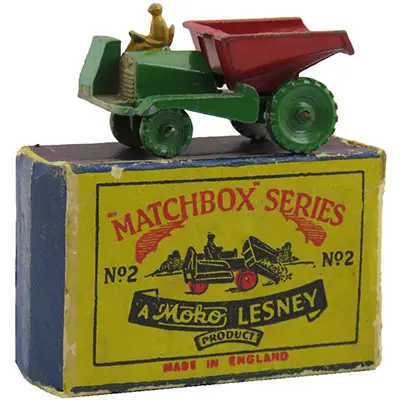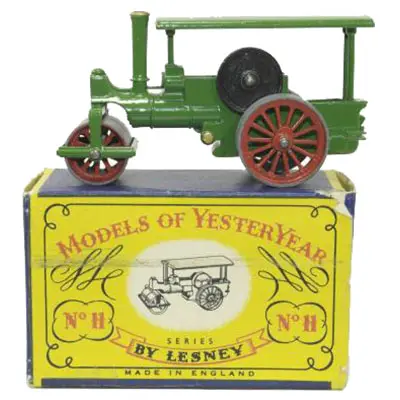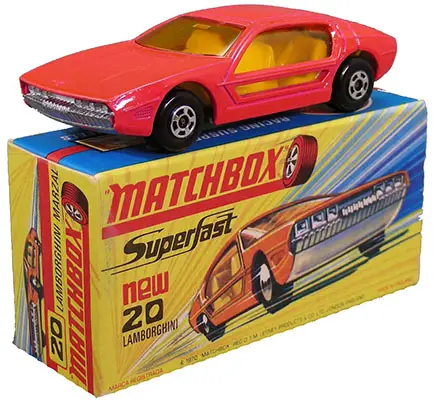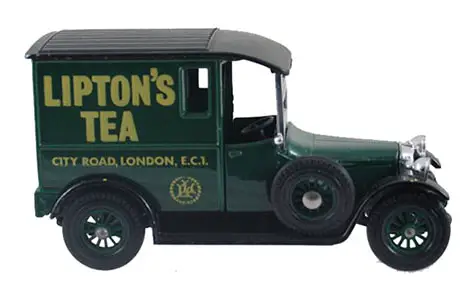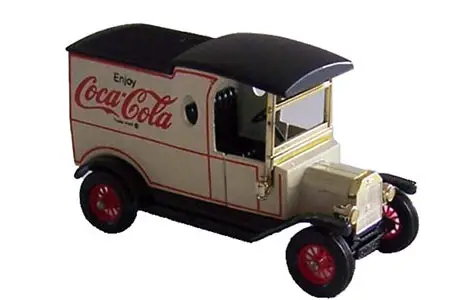Matchbox History

Matchbox history can be defined as the history of diecast miniatures. A pioneer in the manufacture of these miniatures, Matchbox innovated and revolutionized the toy market with the launch of these miniatures. Soon, several other brands emerged to share this market. But how did it all start?
Almost 70 years ago Lesney revolutionized the toy market. John W. Odell (Jack Odell), Leslie Charles Smith and Rodney Smith founded the company, which was named after the combination of the names Leslie and Rodney – Les–ney.
Matchbox was created by Lesney Products in 1953. Lesney began manufacturing diecast toys in 1948. However, the variety of toys created thus far reflected the company’s lack of focus. In 1953, smaller versions of the first toys made by Lesney were made. The first of these was the coronation carriage of Queen Elizabeth II, which sold over a million units.

But the miniature that paved the way for the company’s success was a steamroller, the Road Roller, which eventually became the first model in the 1-75 series. Along with it, the Muir Hill Dumper and Cement Mixer were also released. At that time miniatures had no windows or interiors. They were made entirely of metal and were about 5 cm long.
The success was so great that this became Lesney’s focus and the 1-75 series was born and, along with it, the Matchbox name. The name was due to the packaging where the miniatures were sold, which resembled a matchbox. The line became very popular due to the lack of competitors in the same niche and the affordable prices. It was so successful that the name Matchbox became a generic word to describe small toy cars, whatever the brand.
In the early years of the 1-75 series Lesney was marketed and distributed by Moko, which had a 50% stake in Matchbox. This was until 1959, when Lesney bought Moko’s stake in the company starting a period of growth in sales and size.
During the 50s and 60s other lines were released. Models of Yesteryear featured versions of classic steam vehicles and early automotive eras. The King Size series was introduced in 1960 and featured trucks and tractors, becoming diversified from 1967 on.
In 1968, Matchbox was the best-selling diecast miniatures brand in the world. Unlike early models, they were now around 7cm long and had plastic windows and interior. Some models even featured tires, moving parts and a few other accessories.
That’s when Mattel introduced the Hot Wheels to the market with the revolutionary low-friction wheels. Although it featured less true-to-scale vehicles and often fantasy vehicles, they were eye-catching, painted in bright metallic colors and aggressively marketed with various accessories like racetracks, where you could play with the cars. Another focus for Hot Wheels was to introduce American vehicles to its lineup. Shortly after another competitor, Johnny Lightning, also based in the United States, entered the market. With the arrival of Hot Wheels and Johnny Lightning, Lesney’s sales in the United States plummeted.
At the same time, the British market was also being attacked by competitors.
Lesney’s response was quick with the release of the Superfast line. The 1969 Matchbox line had to undergo a makeover to include low-friction wheels and new colors. Initially, it was a strange line as the wheels were narrow because the company needed time to retool the series to accommodate wide tires.

In the mid-1970s, Matchbox once again became a force in the world market, with the modernization of its line. At the same time, Lesney began to contact collectors sending representatives to meetings and events, researching to learn the collectors’ interests.
This resulted in the introduction of commercial vehicles in the Models of Yesteryear series. The first ones released were two vans, a Talbot and a Model T, with advertising for items such as Lipton tea and Coca-Cola. This quickly expanded to include limited edition models made for other countries or, at the request of companies such as Nestlé and Harrod’s. These items, being limited in print, were highly desirable by collectors and sponsoring companies, as well as being profitable for Matchbox.
In the late 1970s the economic climate in the UK was not good. Although it continued to sell well, Lesney was in financial trouble and eventually went bankrupt in June 1982. The Matchbox brand, some production line equipment, molds, and other assets were sold to Universal Toys and David Yeh. Part of the equipment became the property of Jack Odell, one of the founders of Lesney. He continued to market the Yesteryear line under the Lledo brand.
David Yeh reorganized Lesney and renamed it Matchbox International Ltd. Although it was no longer a British company, production continued in England on a limited basis until the mid-1980s. However, most production was transferred to Macau. During this period Matchbox also acquired the rights to the Dinky brand.
Due to high labor costs and lack of skilled workers in Hong Kong and Macau, the company outsourced its foundry to China. Thus, the first toy company in a joint venture between Hong Kong and Shanghai, called Shanghai Universal Toys Co, Ltd, was born.
The first batch of Matchbox made in China hit the market in 1985. This lasted until 1990, when Matchbox production in Macau ended. Between 1990 and 1992, Matchbox was produced under license by Yongtai Toys Company. In 1992 Matchbox was bought by Tyco Toys, which had its toy division bought by Mattel in 1997, thus merging rivals Hot Wheels and Matchbox into the same company.
This purchase was not viewed favorably by the Matchbox collectors due to the fierce rivalry between Matchbox and Hot Wheels. For Matchbox collectors, the Hot Wheels line was inferior and less attractive. And fears arose that Mattel would apply the same concept to Matchbox. Mattel assured everyone that each line would continue its production independently, and that the plan was that Matchbox would continue to produce more realistic vehicles, while fantasy vehicles would always be directed to Hot Wheels.
However, in 2003, Mattel renewed almost the entire Matchbox line releasing the Ultra Heroes, a series of fantasy vehicles. The market did not respond well and the line was quickly discontinued. The following year, with a new team, Matchbox returned to its roots by producing realistic and well-detailed models.
Since then, Mattel has kept both brands on the market, each with its own qualities and characteristics. Several miniature collectors are loyal customers of both brands. However, there are still collectors who don’t let the rivalry die: they passionately defend one of the brands and don’t miss the opportunity to expose their opinions explaining why one brand is better than the other.
What’s your favorite?


